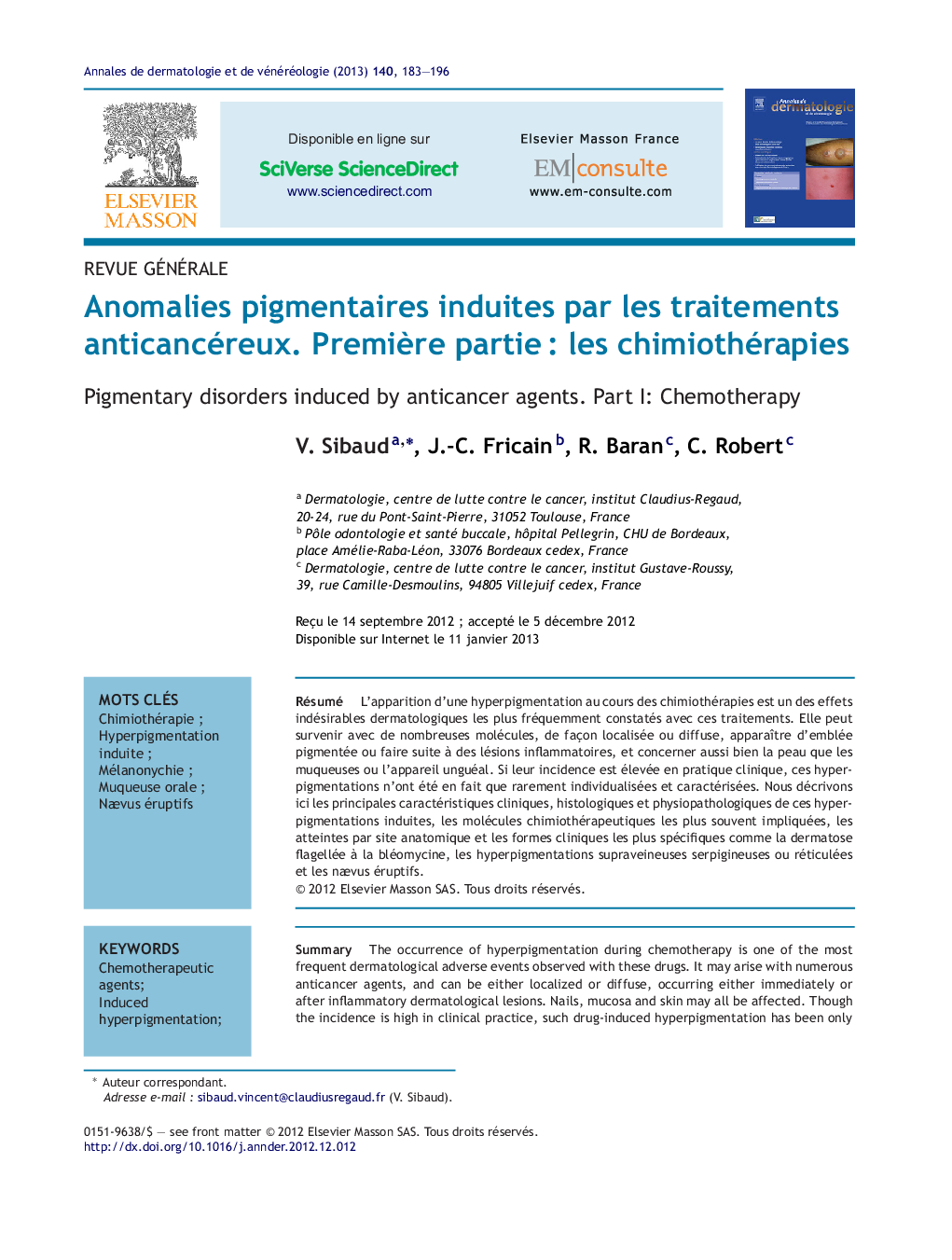| Article ID | Journal | Published Year | Pages | File Type |
|---|---|---|---|---|
| 3187262 | Annales de Dermatologie et de Vénéréologie | 2013 | 14 Pages |
Abstract
The occurrence of hyperpigmentation during chemotherapy is one of the most frequent dermatological adverse events observed with these drugs. It may arise with numerous anticancer agents, and can be either localized or diffuse, occurring either immediately or after inflammatory dermatological lesions. Nails, mucosa and skin may all be affected. Though the incidence is high in clinical practice, such drug-induced hyperpigmentation has been only rarely individualized and characterized. Herein we describe the main clinical, histological and pathophysiological characteristics of these lesions and the most frequently incriminated chemotherapeutic agents, as well as the anatomical areas involved and the most specific clinical patterns such as flagellate dermatitis, reticulate or serpentine supravenous hyperpigmentation and eruptive naevi.
Related Topics
Health Sciences
Medicine and Dentistry
Dermatology
Authors
V. Sibaud, J.-C. Fricain, R. Baran, C. Robert,
